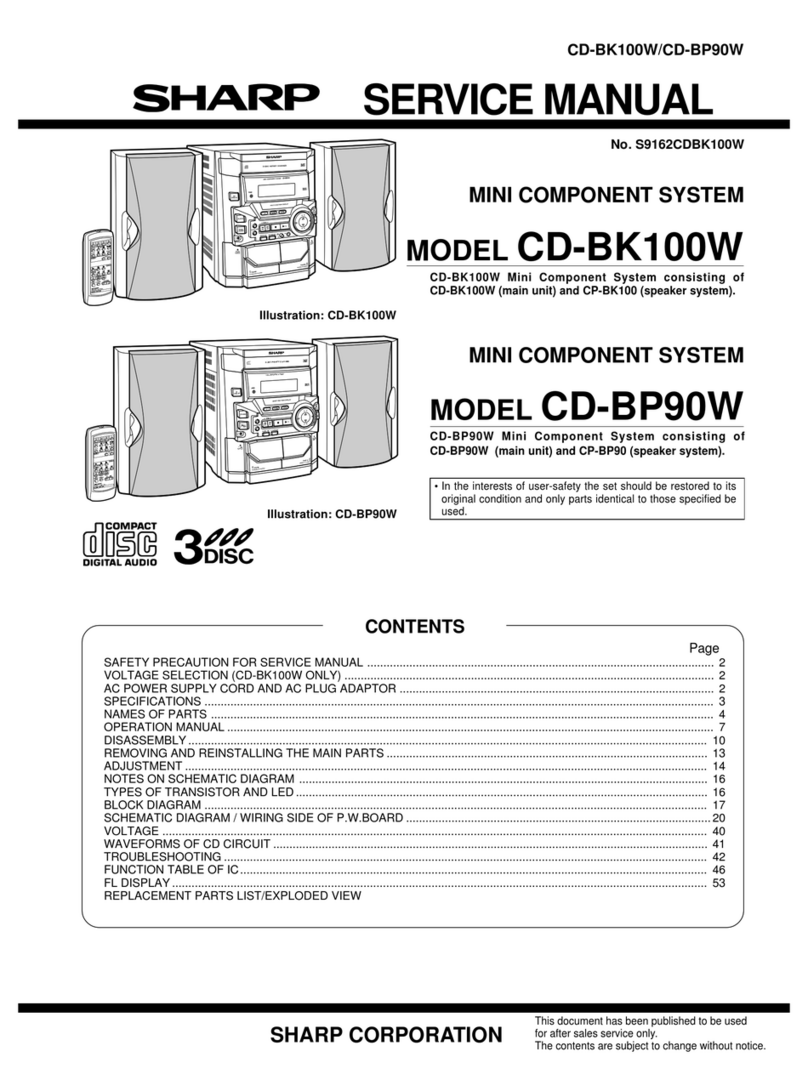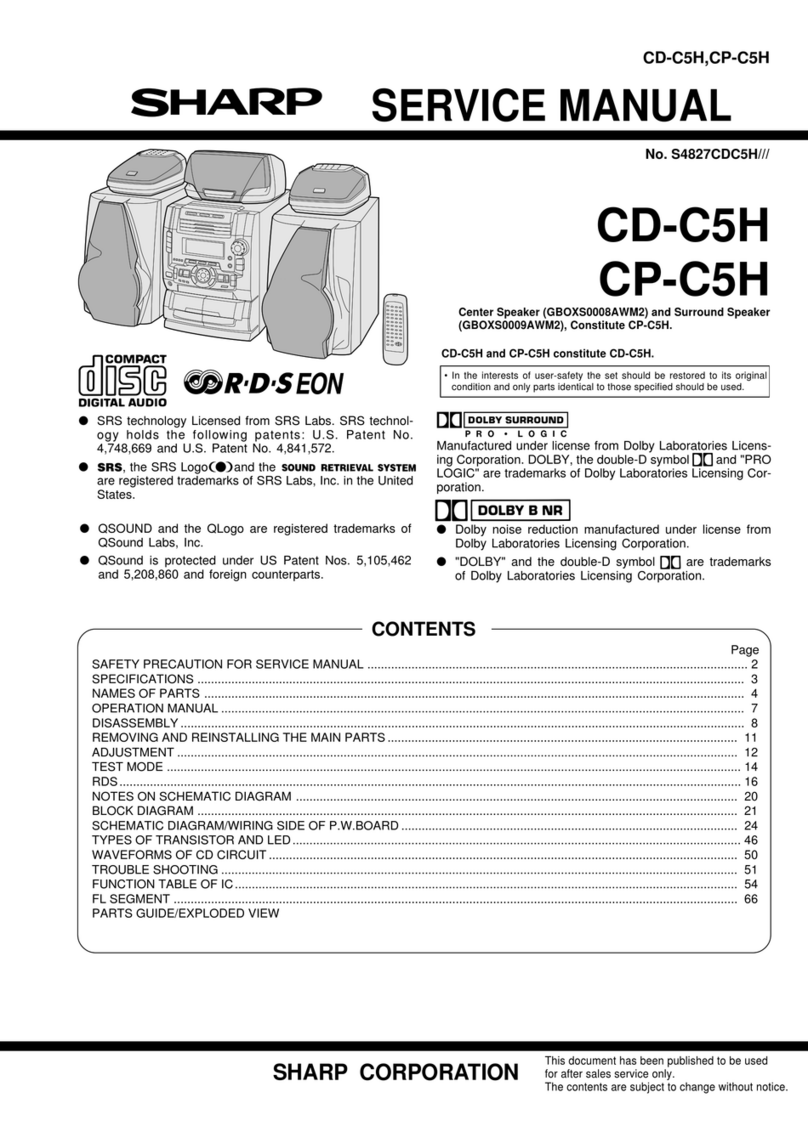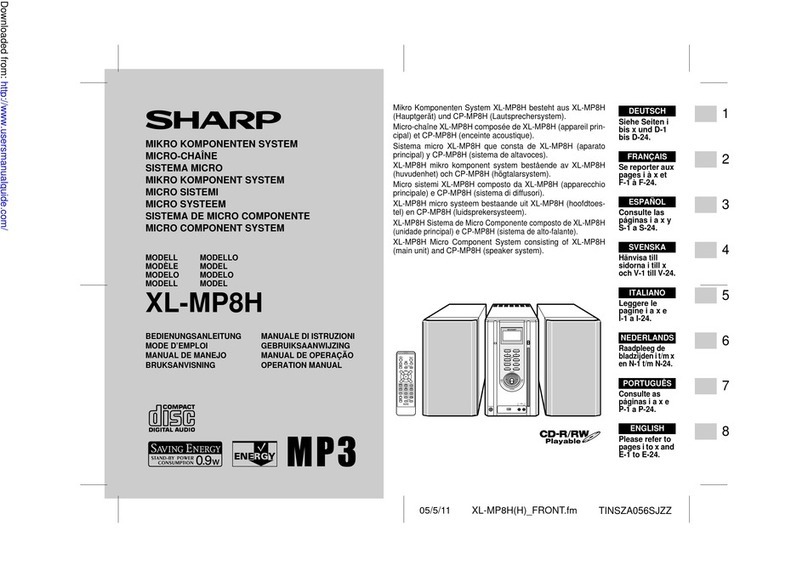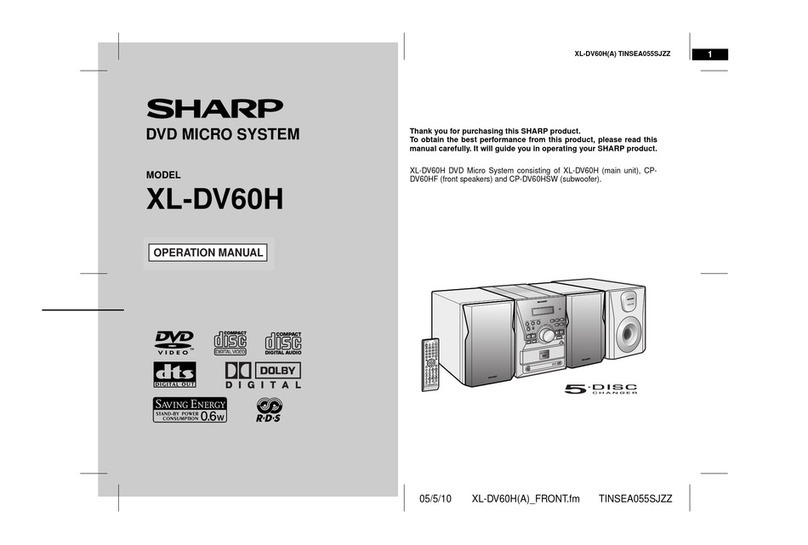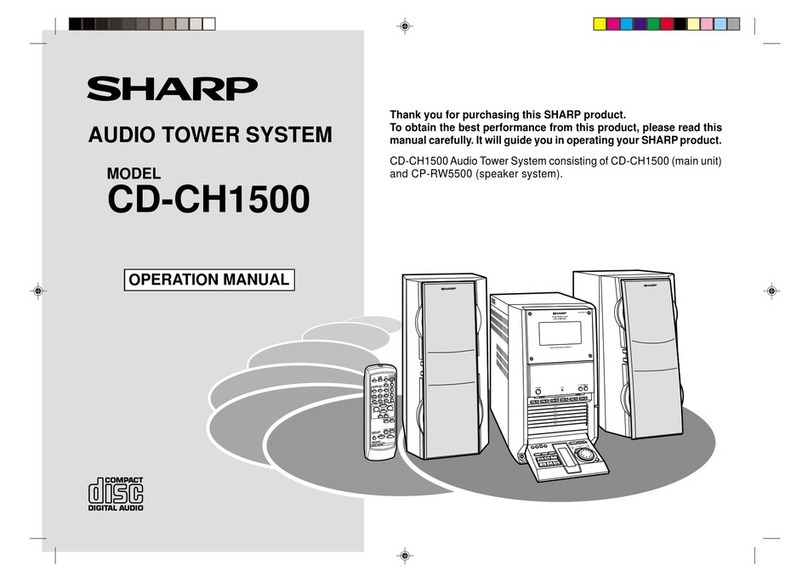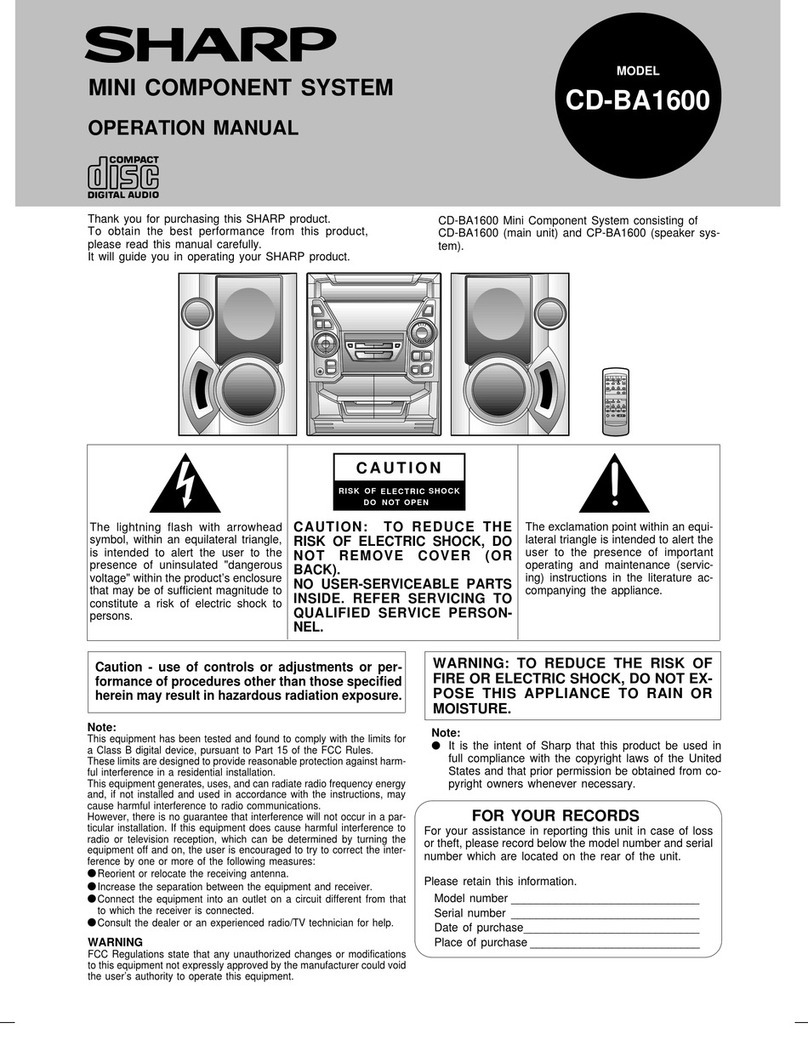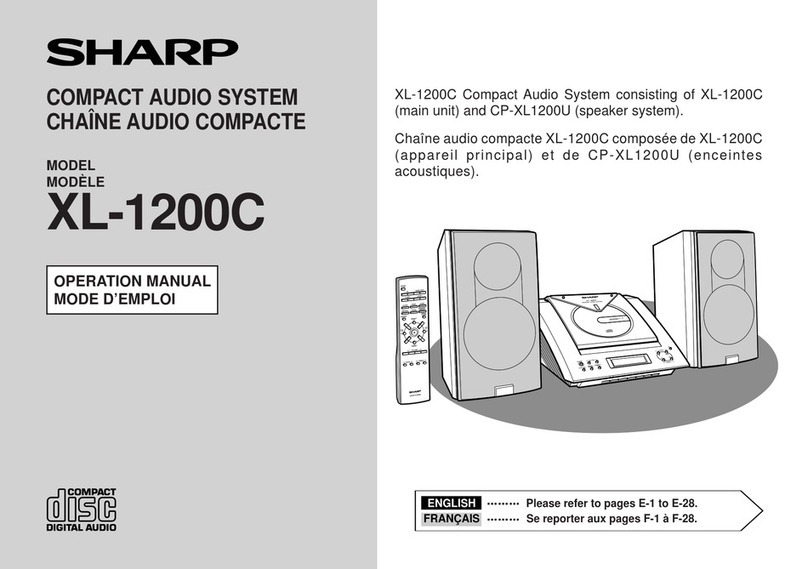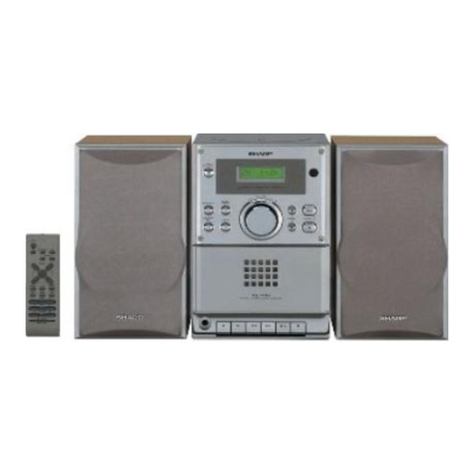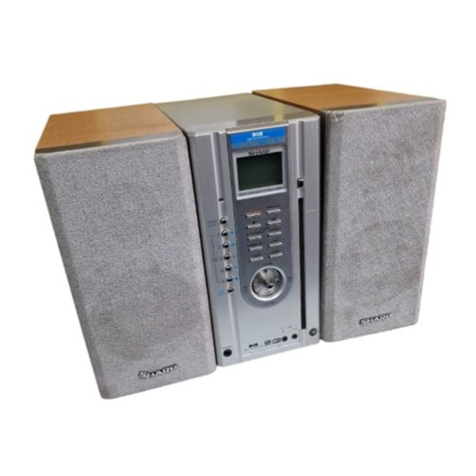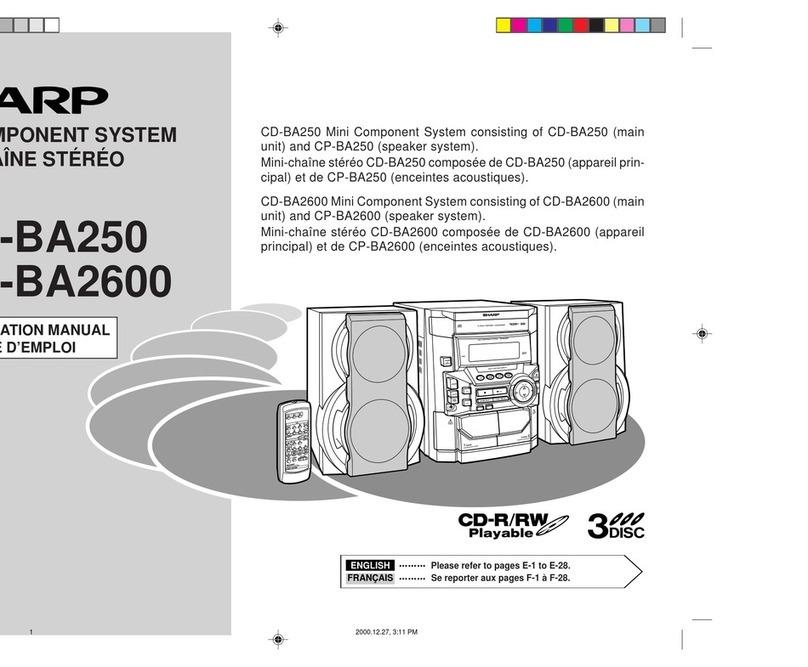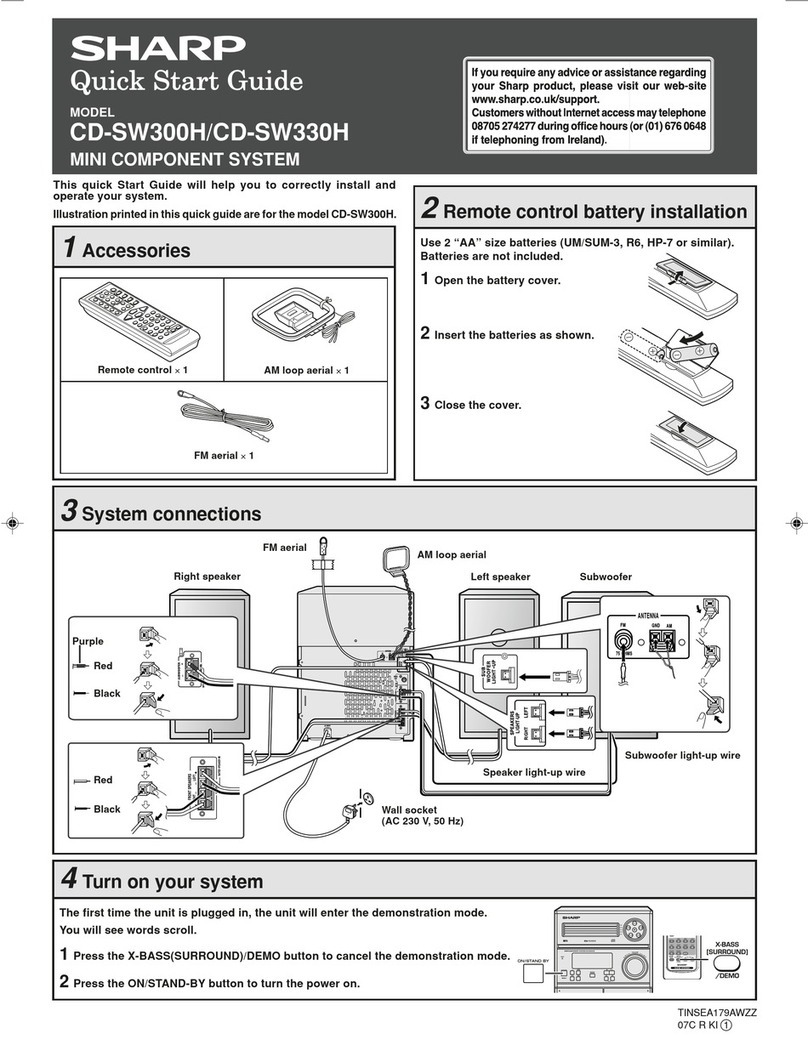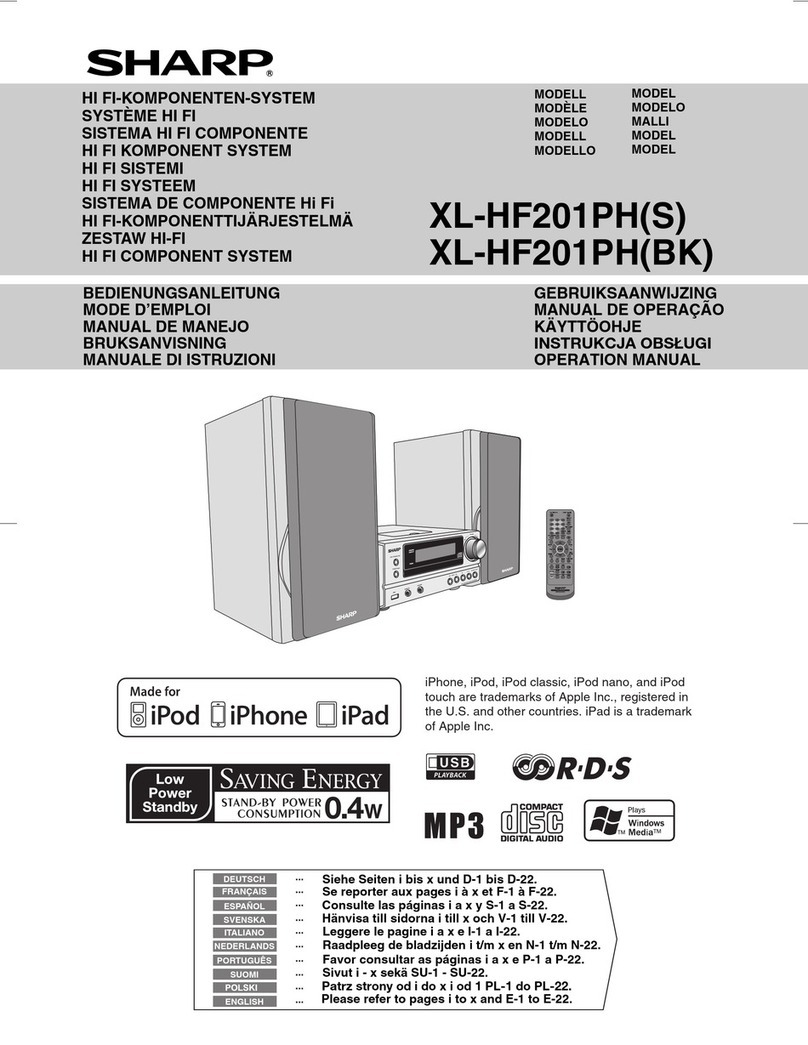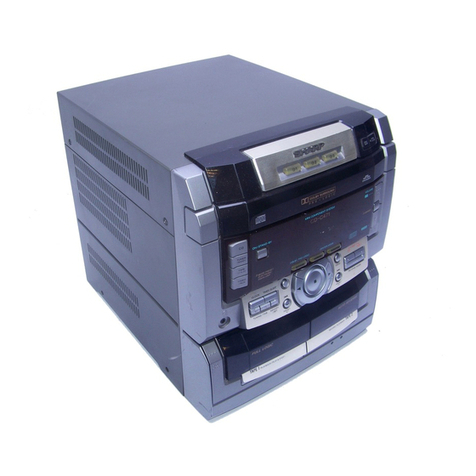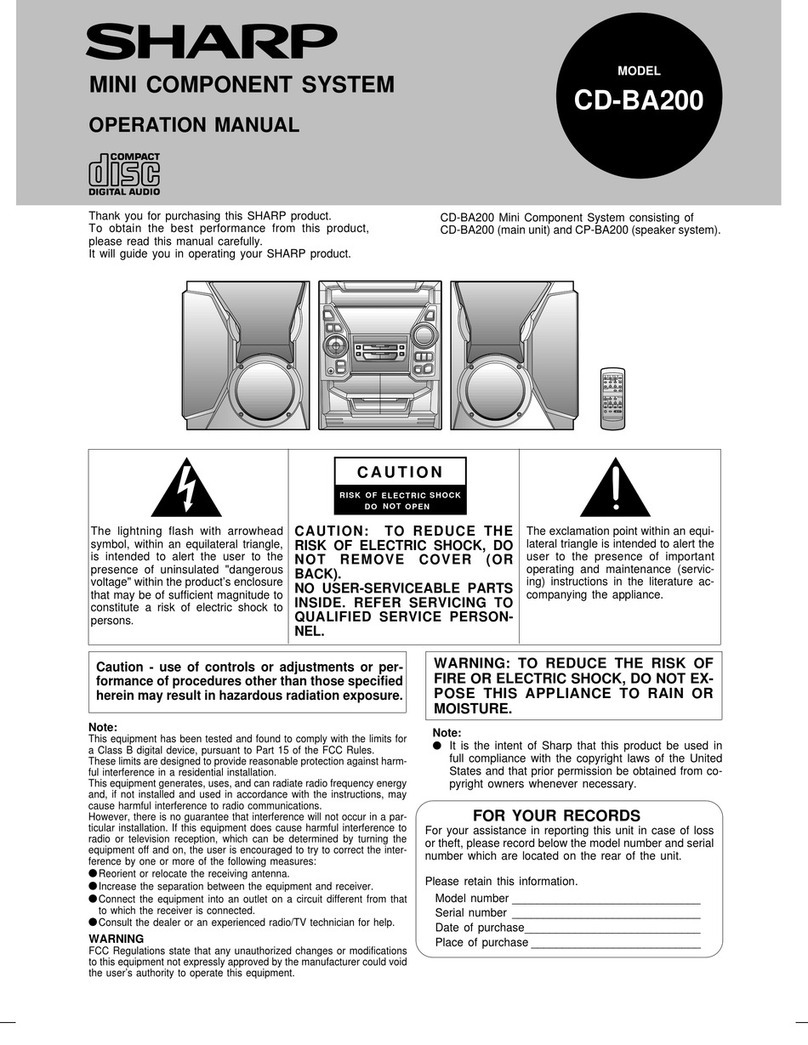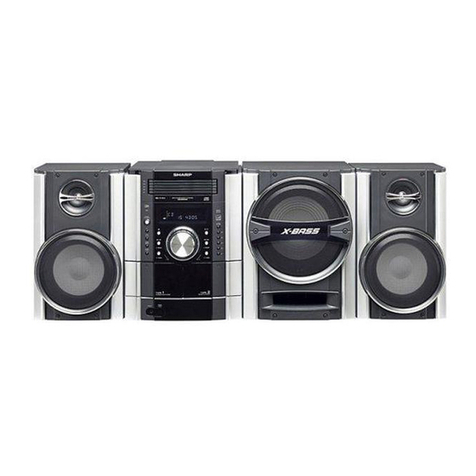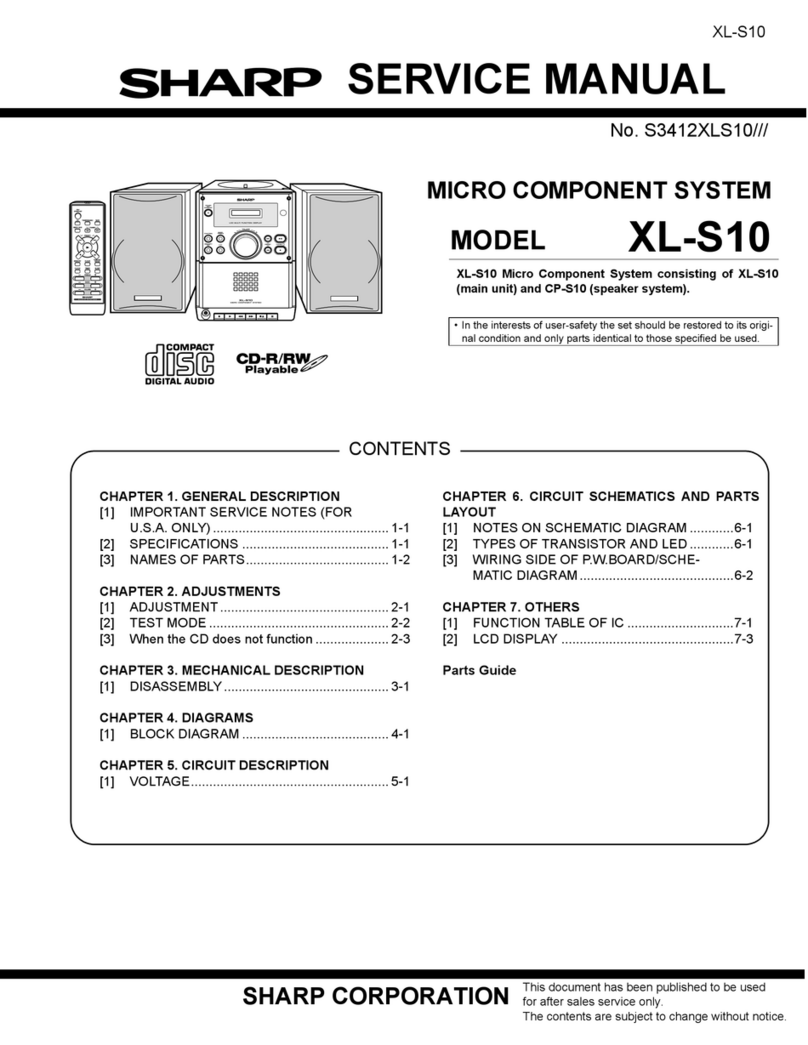
– 9 –
SD-CX1W
Error Messages
When an error message is displayed, proceed as follows:
Error messages Meaning Remedy
BLANK MD Nothing is recorded. (Neither
music nor disc name is re-
corded.)
Replace it with another disc.
Can't COPY You tried to record from a
copy prohibited CD. Replace the CD.
Can't EDIT A track cannot be edited. Change the stop position of the
track and then try editing it.
Can't READ* The disc is damaged. Replace it with another disc.
(*: Number or
symbol) TOC information cannot be
read. Erase the disc and try recording
again.
MiniDisc not specified.
Can't REC Recording cannot be per-
formed correctly due to vibra-
tion or shock in the unit.
Re-record or replace the Mini-
Disc.
Can't T REC Timer recording is impossible
or there is no available space
on the MD.
Replace it with another record-
able disc.
The disc is out of recording
space.
Can't WRITE The TOC information could
not be created properly due to
a mechanical shock or to
scratches on the disc.
Set this unit to the stand-by
mode and try to write the TOC
again. (Remove any source of
shock or vibration whilst writing.)
CD NO DISC A CD has not been loaded. Load a CD.
The CD data cannot be read. Reload the CD.
DISC FULL The disc is out of recording
space. Replace the disc with another
recordable disc.
EDIT OVER You chose 21 or more tracks
for track editing. Decrease the number of tracks.
Er - MD ** A MiniDisc is not working
properly. Press the MD button.
(**: Number or
symbol) Set this unit to the stand-by
mode and turn the power on
again.
Error messages Meaning Remedy
MD NO DISC A MiniDisc has not been load-
ed. Load a MiniDisc.
The MiniDisc data cannot be
read. Reload the MiniDisc.
NAME FULL The number of characters for
the disc name or track name
exceeds 40.
Shorten the disc or track name.
NOT AUDIO Thedatarecordedonthisdisc
is not audio data. Replace the disc.
PLAYBACK MD You tried to record on a play-
back-only disc. Replace it with another record-
able disc.
POWER ? A MiniDisc is not working
properly. Set this unit to the stand-by
mode and turn the power on
again.
PROTECTED The disc is write protected. Move the write protection tab
back to its original position.
TEMP OVER The temperature is too high. Set this unit to the stand-by
mode and wait for a whilst.
TOC FORM ** TOC information recorded on
the MD does not match the
MiniDisc specifications or it
cannot be read.
Replace it with another disc.
(**: Number or
symbol) Erase the discand try recording
again.
TOC FULL There is no space left for re-
cording track numbers. Replace it with another record-
able disc.
TOC FULL 1 There is no space left for re-
cording character information. Replace it with another record-
able disc.
Erase the needless characters.
? MD DISC The data contains an error. Press the MD button.
MiniDisc not specified. Replace it with another disc
Troubleshooting Chart
Many potential "problems" can be resolved by the owner without calling a service
technician.
General
CD player
MiniDisc
Tuner
Remote control
Symptom Possible cause
"TIME ADJUST" appears when the
clock time is checked. Did a power failure occur? Reset the clock.
When a button is pressed, the unit
does not respond. Set this unit to the power stand-by mode and
then turn it back on.
No sound is heard. Is the volume level set to "0"?
Are the headphones connected?
Are the speaker wires disconnected?
The picture on the TV screen is dis-
torted. When a radio or TV which uses an indoor
aerial is placed near the unit, the picture on
the TV screen may be distorted or the radio
may not function properly.
It is recommended that you use an external
aerial.
Symptom Possible cause
Eventhoughadischasbeenloaded,
"CD NO DISC" or "Can't READ" is
displayed.
The disc is very dirty.
Is the unit located near excessive vibrations?
Has condensation formed inside the unit?
Playback does not start. The disc is loaded upside down.
Playbackstopsinthemiddleorisnot
performed properly. The disc does not satisfy the standards.
The disc is distorted or scratched.
Playback sounds are skipped, or
stopped in the middle of a track. Is the unit located near excessive vibrations?
The disc is very dirty.
Has condensation formed inside the unit?
Symptom Possible cause
A recording cannot be made. Is the MiniDisc protected against accidental
erasure?
Did you try to make recording on a playback-
only MiniDisc?
Can you see the "DISC FULL" or "TOC
FULL" message in the display?
Eventhoughadischasbeenloaded,
"MD NO DISC" or "Can't READ" is
displayed.
The disc is very dirty.
Is the unit located near excessive vibrations?
Playback sounds are skipped. Has condensation formed inside the unit?
Symptom Possible cause
Radio makes unusual noise consec-
utively. The stereo system is placed near the TV or
computer.
FM/AM loop aerial is not placed properly.
Move the AC power lead away from the aeri-
al if located near.
The preset channel cannot be re-
called. Did a power failure occur?
Preset the channel again.
Symptom Possible cause
The remote control does not oper-
ate. Is the AC power lead of the stereo system
plugged in?
The battery polarity is not correct.
The batteries are dead.
Incorrect distance or angle.
Does the remote control sensor receive
strong light?.
